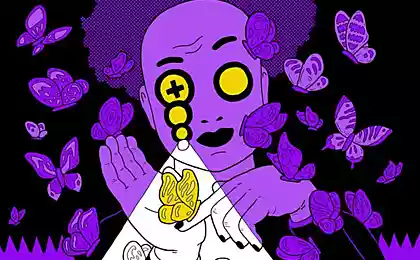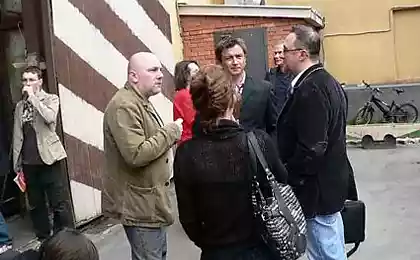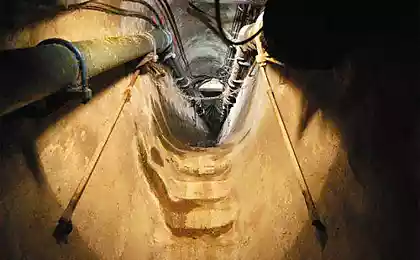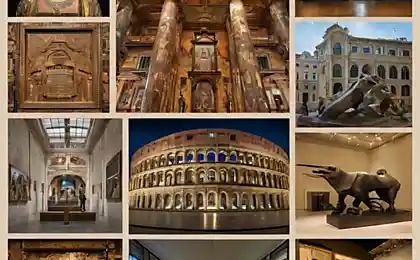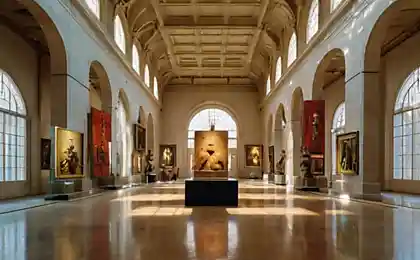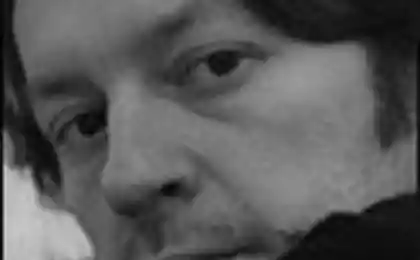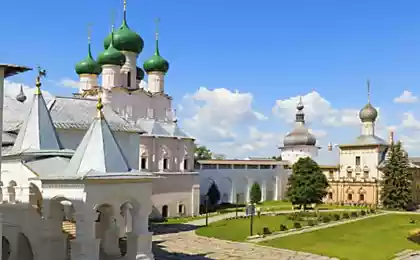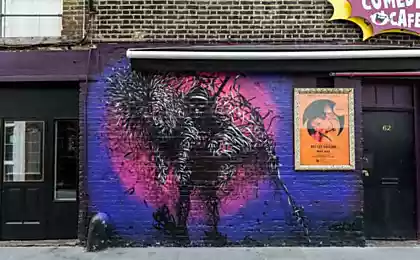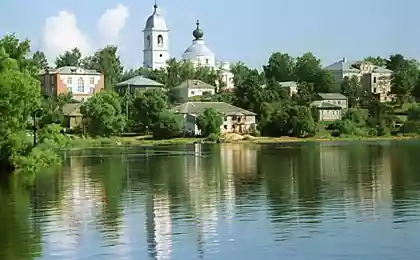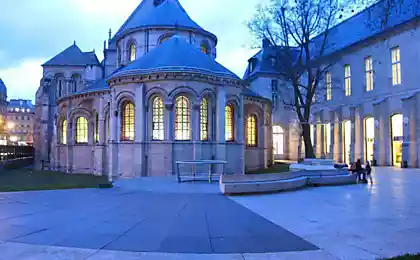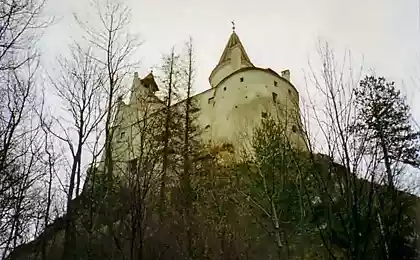201
Parajanov's Crazy Museum
While exploring the sights of Armenia, you will definitely stumble upon one strange and unusual museum. A museum of a man who never lived in this country. Surprisingly, the main symbol of Armenia, Mount Ararat, is located in Turkey. Parajanov also became a property of a country that did not belong to. Who is he, a mad genius who turned people into drawings, events into colorful collages, and his life into a work of art?
From here, from the Dzoragyukh quarter, located on one of the hills of Yerevan, there is a magnificent view of the bowl of the football stadium of the capital. Hardly our hero was interested in football, but it was here that the museum of the inimitable director Sergei Parajanov opened in 1991. No, as we have already found out, Parajanov did not live in Armenia. He is connected with Yerevan by death. In the summer of 1990, he was dying of cancer and it was to this country that he bequeathed all his artworks, which are now stored on the top of the hill in his mad museum.
The museum's collection of about 1,400 exhibits includes collages, drawings, ceramics, film sketches, dolls and hats, as well as unpublished scripts and works created in the prison. Collages, ceramics, hats – sounds boring to yawn, but in any case do not stop reading, because “boring” – this is definitely not about Parajanov. The museum’s collection is a brain explosion mixed with pomegranate bones and shards of dishes. So, welcome to the most incomprehensible and fascinating museum, to the crazy Parajanov Museum.
One of the exhibits of the museum is a symbol of a Georgian woman. In Parajanov’s imagination, a Georgian woman is an old worn shoe, put in a cage and forever deprived of her freedom. Parajanov spent the last years of his paradoxical life in Tbilisi. According to the law of the genre, a great man must necessarily have friction with power. Therefore, Parajanov was forbidden to make films, as well as to live in Ukraine. For fifteen years he was suspended from cinema. Far from his favorite business, the artist goes crazy (although much more, many would ask) from the forced rest and works on his collages. The interiors of his Tbilisi house were also moved to the museum, and the house itself was sold for a large sum.
Here in Georgia, Parajanov was again allowed to film. While his film "Ashik-Kerib" rattled behind the bump, at home, as you would expect, the premiere failed miserably. Parajanov is invited to Holland, France, Italy. By the way, there is a piece of France in the master’s museum, although there is almost nothing left of the republic of freedom of equality and brotherhood that is familiar to us, admire how Parajanov dances on the bones of Leonardo.
See those black and white drawings? This large collection of works was made by the artist behind bars. It was because of the prison term that Parajanov was forced to meet old age in Georgia, after serving time he was forbidden to stay on the territory of Ukraine and not allowed to make films for many years. He thundered at Parajanov's bars under the article homosexuality. The case was launched on the whip of the Kremlin, there was a certain garrulous clap, claiming that Parajanov raped him, and the artist was ambushed for five years. While Sergei Parajanov wore striped pajamas, he did not stop making art. An unusual prisoner was looking for nails, papers, dried flowers, kefir caps on the territory of the prison - and everything went into action. So, on the eighth of March, he sent a gift from prison to his elderly admirer Lila Brick. Yes, yes, the same Lilechka, Mayakovsky's beloved. On International Women's Day, Brick received a bouquet of barbed wire and Parajanov socks.
Take a look at the souvenir shop of the museum, here you will definitely find a postcard with expressive female eyes. This is the mysterious look of the famous actress Sofiko Chiaureli. Along with the arrest of the director was withdrawn from the rental and his film “The Color of Pomegranate”. The same film that attracts viewers to the screens with this beautiful, fascinating look. This is the story of the Armenian poet Sayat Nova, and Sofiko Chiaureli performed six roles in the film. She played the poet, his beloved, and his muse.
The epithets "strange" and "unusual" will not even half define what is happening on the screen. This is not a film, but rather a beautiful collage, similar to one that hangs in a museum on a hill. From this picture you will definitely understand little about the life path of the medieval poet, maybe you will not even look to the middle, but it is still worthwhile to start watching. From these animating collages, framed by bright colors, patterns of carpets and hypnotizing plastic just can not take your eyes off. What's the point? What did the author mean? Yeah, damn it, Parajanov's language is as complicated as it is beautiful.
Of course, the Soviet authorities did not understand the film and left it on the shelf for four years. When the masterpiece was released, it was edited by another director.
Among the collection of the museum, it is interesting to look at the collection dedicated to the film Shadows of Forgotten Ancestors, because it was he who brought Parajanov fame. This picture tells about the love of Hutsul Romeo and Juliet. By the way, Kusturica once said that this is the best picture in the world. Filming took place in Ukraine, where Parajanov lived before his arrest. Here he married Ukrainian Svetlana Shcherbatyuk, from this marriage was born a son Suren. But Parajanov’s family happiness was not destined to come true. Svetlana is tired of being part of Parajanov’s collage, spreading the cutlets in a certain way and sitting down so that everything looks perfect, as in the frame.
This was not the director’s first marriage. When the young Parajanov studied at the Moscow VGIK, he married a young Tatar Nigar. The denouement of the story turned out to be Parajanov tragic. Relatives did not approve of her husband and ordered Nigar to dissolve the marriage, and after refusing to obey – killed her.
Among the museum’s collection are photographs of Parajanov’s parents. The future director spent his childhood in Tbilisi. The soundtrack to this text, like Parajanov, was born on the territory of Georgia. The song, of course, is modern, and, probably, it would not have impressed the master, it would have been painfully ordinary for him.
Parajanov was born in the family of a hereditary antiquarian, which means that his romance with old things began in childhood. He brought home everything that attracted his attention: old carpets, stones, glass. He turned ordinary things into exceptional objects of art, and his life into one big crazy museum, full of film footage, patterned carpets, drawings and collages, inadequate antics and tragedies. It was life with a gun to its temple. Sergei Iosifovich Parajanov was born in Tiflis (now Tbilisi) on January 9, 1924, this year he would have turned 91.
Author: Ksenia Yermolaeva
P.S. And remember, just changing our consumption – together we change the world!
Join us on Facebook, VKontakte, Odnoklassniki
Source: www.cablook.com/inspiration/sumasshedshij-muzej-paradzhanova/

